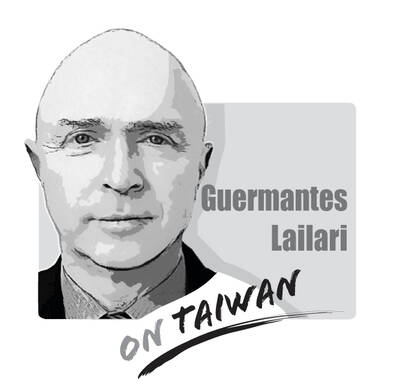In past years September has seen headlines about Taiwan’s bid for UN membership ahead of the annual UN General Assembly meeting in New York. Despite setbacks deriving from Chinese obstruction, the bids helped raise Taiwan’s international profile, showing the international community that the Taiwanese people want to be recognized.
The annual bid was also symbolic, with the government proclaiming to the world its sovereignty and that Taiwan is not part of the People’s Republic of China (PRC).
The distinction between the Republic of China and the PRC, however, is blurring as the former gradually fades on the international stage with President Ma Ying-jeou (馬英九) in power.
One example of this was the nation’s bid to rejoin the UN last year in which Ma’s administration departed from the usual path of having Taiwan’s allies speak on its behalf at the UN General Assembly for full membership in the organization. Instead, the government, citing Ma’s modus vivendi foreign policy, which the government describes as a “more pragmatic and practical strategy,” proposed Taiwan be allowed to “participate meaningfully in the activities of UN specialized agencies.”
While the government hailed Taiwan’s accession to the World Health Assembly as an observer in May as a manifestation of this new approach, it failed to offer a clear account of dubious dealings with China in the process.
This year, not only has the Ma administration decided against a bid for full UN membership, it has yet to finalize in what ways and in which affiliated organizations it plans to participate.
So much for seeking Taiwan’s “meaningful participation in UN specialized agencies.” It appears the government isn’t really enthusiastic about pushing Taiwan’s interests in this regard.
“Given the current international environment, flexible diplomacy, which is pragmatic and practical, is the most accurate diplomatic approach for Taiwan to take,” Minister of Foreign Affairs Timothy Yang (楊進添) has said.
However, under Ma’s diplomatic ceasefire with Beijing, the government appears to be disarming itself diplomatically as China continues to encroach on Taiwan’s visibility.
While some may argue that the result of this is warming relations with China, the truth is that Taiwan’s sovereignty is being diminished.
It is pathetic that the president of a democratic country would so easily relinquish the opportunity to fight for his country’s place in the world and assert his nation’s sovereignty.
Despite the government’s lack of interest in pushing for UN membership, a group of ardent Taiwanese flew to New York this week to campaign for Taiwan’s inclusion. However, there is only so much civic groups can do.
If the government cannot be bothered to fight for recognition on the global stage, it will only be a matter of time before the world starts to view Taiwan as a natural part of China.

Chinese state-owned companies COSCO Shipping Corporation and China Merchants have a 30 percent stake in Kaohsiung Port’s Kao Ming Container Terminal (Terminal No. 6) and COSCO leases Berths 65 and 66. It is extremely dangerous to allow Chinese companies or state-owned companies to operate critical infrastructure. Deterrence theorists are familiar with the concepts of deterrence “by punishment” and “by denial.” Deterrence by punishment threatens an aggressor with prohibitive costs (like retaliation or sanctions) that outweigh the benefits of their action, while deterrence by denial aims to make an attack so difficult that it becomes pointless. Elbridge Colby, currently serving as the Under
The Ministry of the Interior on Thursday last week said it ordered Internet service providers to block access to Chinese social media platform Xiaohongshu (小紅書, also known as RedNote in English) for a year, citing security risks and more than 1,700 alleged fraud cases on the platform since last year. The order took effect immediately, abruptly affecting more than 3 million users in Taiwan, and sparked discussions among politicians, online influencers and the public. The platform is often described as China’s version of Instagram or Pinterest, combining visual social media with e-commerce, and its users are predominantly young urban women,
Most Hong Kongers ignored the elections for its Legislative Council (LegCo) in 2021 and did so once again on Sunday. Unlike in 2021, moderate democrats who pledged their allegiance to Beijing were absent from the ballots this year. The electoral system overhaul is apparent revenge by Beijing for the democracy movement. On Sunday, the Hong Kong “patriots-only” election of the LegCo had a record-low turnout in the five geographical constituencies, with only 1.3 million people casting their ballots on the only seats that most Hong Kongers are eligible to vote for. Blank and invalid votes were up 50 percent from the previous
Japanese Prime Minister Sanae Takaichi lit a fuse the moment she declared that trouble for Taiwan means trouble for Japan. Beijing roared, Tokyo braced and like a plot twist nobody expected that early in the story, US President Donald Trump suddenly picked up the phone to talk to her. For a man who normally prefers to keep Asia guessing, the move itself was striking. What followed was even more intriguing. No one outside the room knows the exact phrasing, the tone or the diplomatic eyebrow raises exchanged, but the broad takeaway circulating among people familiar with the call was this: Trump did